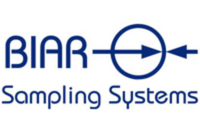Determining Vinyl Chloride Strength
Vinyl Chloride, also called Vinyl Chloride Monomer (VCM), is a highly flammable gas that may cause cancer. It reacts with copper, oxidizers, aluminum, peroxides, iron, steel, air, sunlight, or heat unless it is stabilized by inhibitors such as phenol.
Why sample VCM?
- To determine potential contamination and concentration.
What to Look for in the Sample
- Hydrochloric acid (HCl), caustic trace chemicals, and moisture.
How to Safely Take VCM Samples
- Because VCM is highly toxic, it should be sampled in totally enclosed systems, such as a REVO-BOX.
Vinyl Chloride
1) Description
Name: ..............................................................................................Vinyl chloride
Chemical Formula: ........................................................................C2H3Cl
CAS No: ..........................................................................................75-01-4
Other Names: ...............................................................................Chloroethene, Chloroethylene, Ethylene monochloride, Monochloroethene, Monochloroethylene, VC, VCM, Vinyl chloride monomer (VCM)
Uses: ...............................................................................................Industrial
Physical state: ..............................................................................Colorless gas or liquid (below 7°F)
Color: ..............................................................................................Colorless
Odor: ...............................................................................................Mild, sweet odor
Boiling Point: ................................................................................-13.9°C (7°F)
Freezing Point: ..............................................................................-160°C (-256°F)
Flash Point: ...................................................................................179°C (-110°F)
Upper Explosive Limit: .................................................................33.0%
Lower Explosive Limit: .................................................................3.6%
Vapor pressure: ..............................................................................3 mmHg
2) Hazards
H220: Extremely flammable gas
Reactivity: Copper, oxidizers, aluminum, peroxides, iron, steel [Note: Polymerizes in air, sunlight, or heat unless stabilized by inhibitors such as phenol. Attacks iron & steel in presence of moisture.]
Specific Hazards related to Sampling: As VCM is highly flammable and a carcinogen, it is important that Operators are protected at all times from accidental spills, splashes and fumes. Ideally, sample systems should be enclosed with an adequate venting system to prevent exposure. Alternatively, it can be sampled using an enclosed system such as a container.
_________

3) Sampling Facts
Plants need to monitor for potential contamination and concentration
HCl, caustic, trace chemicals and moisture. Typically, samples are analyzed using gas chromatography.
4) Most common Sample Receptacles
As VCM is extremely toxic, it should be sampled in a totally enclosed system.


